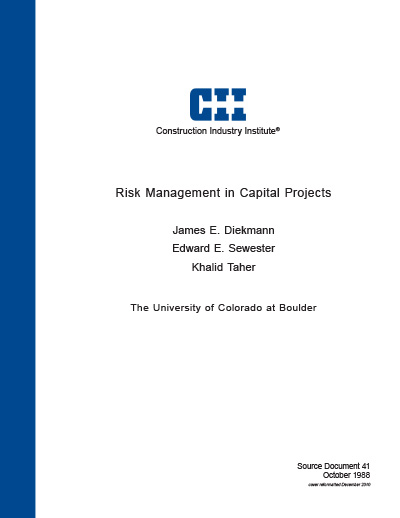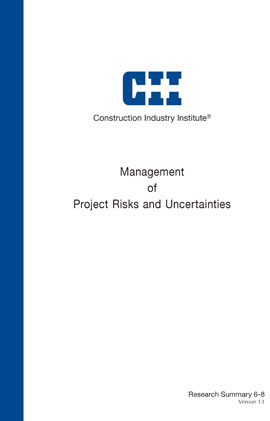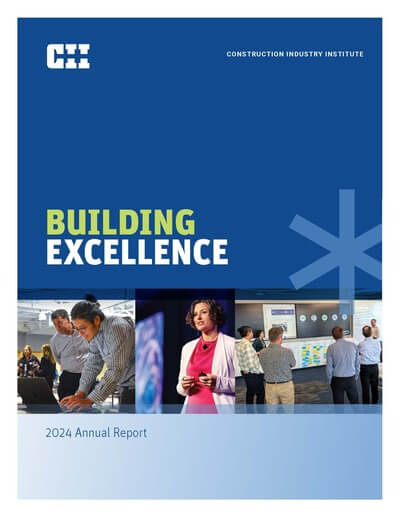
Risk Management in Capital Projects
This report has introduced the reader to risk management procedures as they are applied in the construction industry. The body of knowledge contained in this report stressed the three phases of a risk management (identification – measurement – management). Each phase is necessary to the analysis to provide optimum results. In addition, the sequencing should start with the identification and end with proper management. The process should be continuous throughout the project, as conditions are susceptible to change and the amount of information increases as the project progresses.
Identifying the Risk: The risk identification phase is designed to determine the nature and source of risks, and thus provide a list of risky elements. Without initially identifying potential project risks a risk analysis would not exist. There would be nothing to measure and thus, nothing to manage.
There appears to be three major sources for identifying risk: experience, insight, and historical data. As a combination of the three, the best method of identifying risks would be modifying historical data (if available) by human insight and experience. The risk characteristics that are of major concern are: 1) the severity of loss, and 2) the frequency of loss.
Measuring the Risk: Phase two of a risk analysis is the measuring of the identified risks. It is in this phase that one attempts to quantify the frequency and severity based on the variability of inputs. The method of measurement presented in this report dealt in terms of the risk element’s cost.
Many different techniques are available to measure risk, each has an appropriate niche. It requires some skill and knowledge to successfully match the capability of the tool to the requirements of the decision. The important elements of the decision are:
- The perceived seriousness of the risk
- The complexity of the situation
- The availability of the required expertise
The attributes of the various risk measurement techniques which are important to consider during selection are:
- The type of risk which is best modeled by the technique
- The kind of output which is provided to the decision-maker
- The types of model and data required by the technique
- The ability of the technique to handle complexity and correlations among the variables
Managing the Risk: As the final phase of a risk analysis, the management of identified and measured risks is the point where considered decisions are needed. These decisions begin at conception and continue through plant start-up and beyond. These decisions will have to be made to control the risks in the project scope, cost, contracts, quality, and resources. Contingency plans were discussed as a means of managing risks. Five alternatives are presented in this report which may be used to help control risks. These are: elimination, reduction, transfer, sharing, and retaining uninsured. With the initial control in the hands of the owner, it is his choice as to who controls particular risks. Yet, the decision maker should be cognizant of who can best control the risk, and who is in the best position to accept it.
Is contingency enough to cover measured risks? This is just one question that will be answered at a time when it is too late to increase a bid. Therefore, techniques to control risk must be in constant use. Control is enhanced by restricting who controls the contingency spending, and monitoring the disbursement of funds.
Closing Remarks: Throughout this report the intent was to provide as much information as available about the management of risk in the construction industry. This is evidenced by inclusion of more than one definition or view (when available) of all the topics covered. Each definition had its own unique elements; this is evidence of both the complexity and the youth of the risk analysis/risk management specialty. The ideas, methods, and considerations are compilations of several authors. As with most complex (and philosophical) issues there is room for honest disagreement. Each reader must decide the appropriate position to adopt for their own circumstance.
The writers hope that this report has been a learning (awareness-oriented) experience for the reader, as it was to have written it. The following list is a compilation of the major points that are contained in this risk analysis report.
- Risk analysis is a continuous process to meet the needs of new or updated information.
- Identifying risks is both difficult and very important.
- Information is obtained by historical data, an expert’s insight, and experience.
- Care should be taken to select a risk measurement tool which matches the needs of the problem.
- There are several strategies available to manage risk, careful analysis of the options is necessary.
- If risk is allocated it should be allocated to the party that is best able to control it.
- If contingency accounts are used to guard against risk, those funds should be managed carefully to aid in the overall project control effort.



